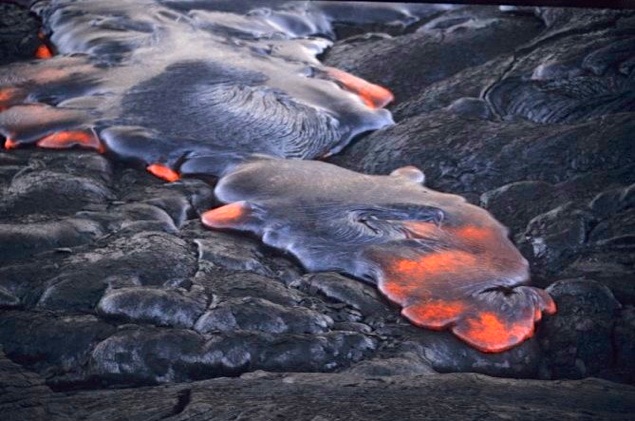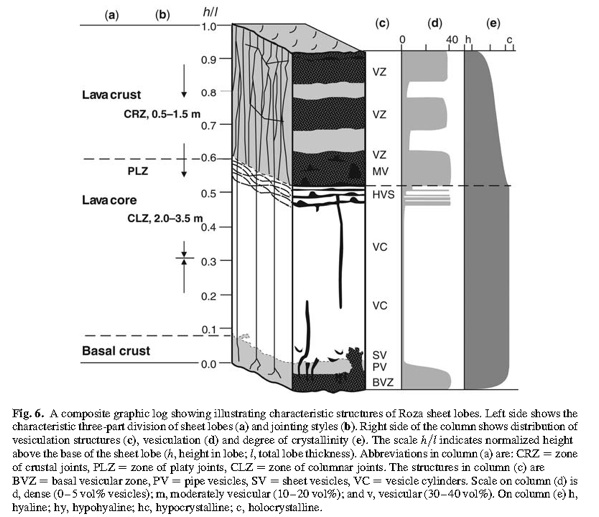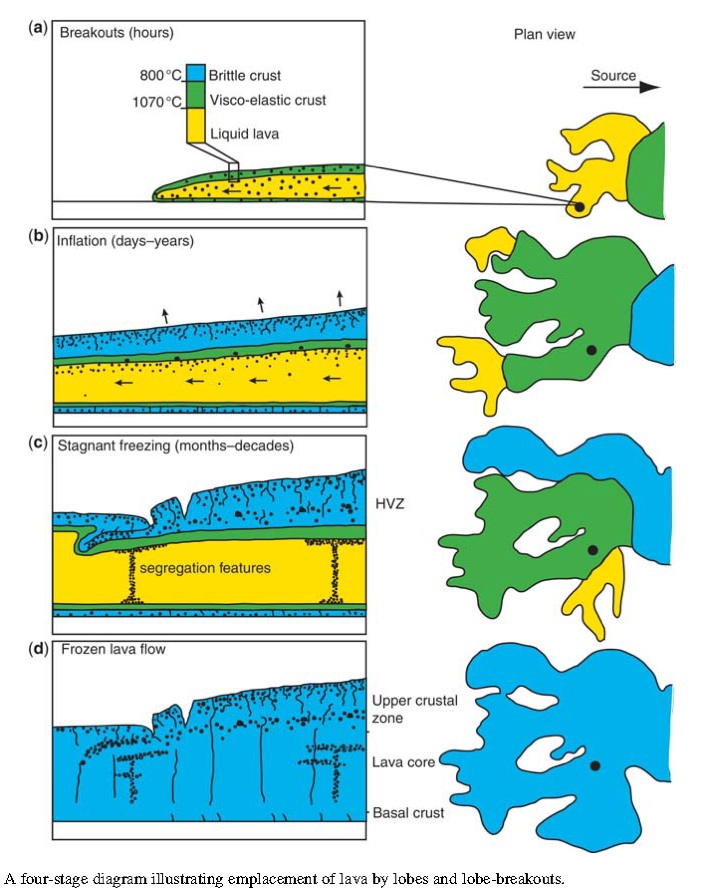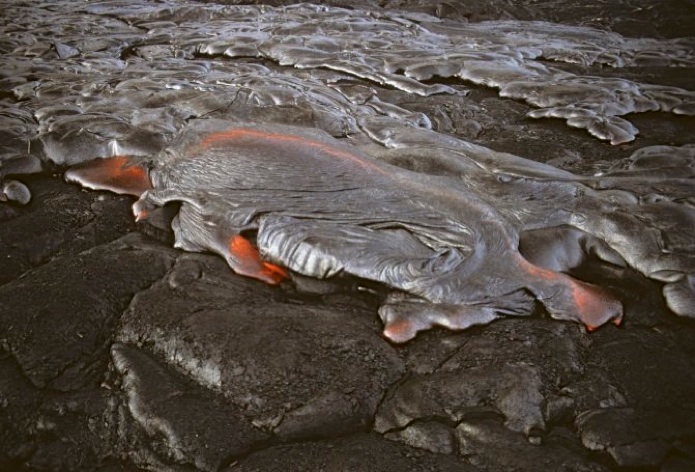
My Albums
My Photos
Text

Pahoehoe
This is a photoessay of active pahoehoe flows at Kilauea. Pahoehoe forms when lava is slowly covering and existing land surface and while a crust forms from chilling of the hot lava by the cold air.
1.1 billion years ago, the Keweenaw rift was erupting basalt from tens of kilometers depth. We think it was like modern examples, such as Kilauea at Hawaii National Park, Hawaii, where pahoehoe is well known from direct experience, thanks to work by Hon et al., 1994.



From Hon et al., 1994:
Inflated pahoehoe sheet flows have a distinctive horizontal upper surface, which can be several hundred meters across, and are bounded by steep monoclinal uplifts. The inflated sheet flows we studied ranged from 1 to 5 m in thickness, but initially propagated as thin sheets of fluid pahoehoe lava, generally 20-30 cm thick. Individual lobes originated at outbreaks from the inflated front of a prior sheet-flow lobe and initially moved rapidly away from their source. Velocities slowed greatly within hours due to radial spreading and to depletion of lava stored within the source flow. As the outward flow velocity decreases, cooling promotes rapid crustal growth. At first, the crust behaves plastically as pahoehoe toes form. After the crust attains a thickness of 2-5 cm, it behaves more rigidly and develops enough strength to retain incoming lava, thus increasing the hydrostatic head at the flow front. The increased hydrostatic pressure is distributed evenly through the liquid lava core of the flow, resulting in uniform uplift of the entire sheet-flow lobe. Initial uplift rates are rapid (flows thicken to 1 m in 1-2 hours), but rates decline sharply as crustal thickness increases, and as outbreaks occur from the margins of the inflating lobe. One flow reached a final thickness of nearly 4 m after 350 hr. Inflation data define power-law curves, whereas crustal cooling follows square root of time relationships; the combination of data can be used to construct simple models of inflated sheet flows.
As the flow advances, preferred pathways develop in the older portions of the liquid-cored flow; these pathways can evolve into lava tube systems within a few weeks. Formation of lava tubes results in highly efficient delivery of lava at velocities of several kilometers per hour to a flow front that may be moving 1-2 orders of magnitude slower. If advance of the sheet flow is terminated, the tube remains filled with lava that crystallizes in situ rather than draining to form the cave-like lava tubes commonly associated with pahoehoe flows.
Inflated sheet flows from Kilauea and Mauna Loa are morphologically similar to some thick Icelandic and submarine sheet flows, suggesting a similar mechanism of emplacement. The planar, sheet-like geometry of flood-basalt flows may also result from inflation of sequentially emplaced flow lobes rather than nearly instantaneous emplacement as literal floods of lava.
Read about pahoehoe:
Hon K, Kauahikaua J, Denlinger R, Mackay K. 1994. Emplacement and inflation of pahoehoe sheet flows: observations and measurements of active lava flows on Kilauea Volcano, Hawaii. Geol. Soc. Am. Bull. 106:351–70
The importance of pahoehoe: Review paper by Self et al., 1998
Physical volcanology of continental large igneous provinces:
-
J.D. L. WHITE, S. E. BRYAN, P.-S. ROSS,
S. SELF & T. THORDARSON



Hon et al., 1994
Self, 1998
